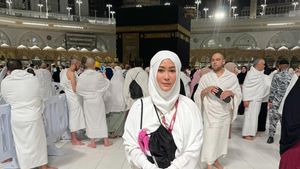YOGYAKARTA - Maybe you are wondering why the eldest child, middle child, and youngest child have different personalities. It turns out that this fact can be explained by the birth order theory to see the child's personality based on the birth sequence. It is important for parents to get to know the birth order for parenting or parenting.
So it is very natural that there are differences in personality between the first child, middle child, and the last child even though they were raised by the same family. The theory of birth order (born sequence) can be used to understand the personality formation of children based on the birth sequence.
The birth order theory was introduced in the 1900s by Alfred Adler an Austrian psychotherapist. Adler believes that the child's birth sequence can shape the child's thoughts and behavior in the family. That's why parents need to get to know the birth order and explanation.
Not a few parents are confused about why each child can have a different personality. For example, the first or eldest child tends to have a leadership and perfectionist nature, the child is more friendly and likes to seek attention, or a third child who is more cheerful and free-hearted.
To understand this, parents need to know that the birth sequence of children can shape their personality and potential in the future. Knowing the birth order theory can help parents in adopting parenting or educating their children in the right way.
The following is an explanation of the child's personality based on the theory of birth order quoted from ai.care.id:
Birth order theory says the first child tends to get attention and time more than parents. Parents will usually pay more attention when having children as their first experience.
But on the other hand, sometimes parents are not ready when faced with having to take care of their first child. Parents who are still easy and have just learned to care for their children, may be able to apply stricter parenting, be careful, firm, and have high expectations on them.
The first child is usually also given responsibility and is expected to be a role model for his younger siblings. But in addition, the eldest child can also experience divided attention because the attention of parents is limited to relatives or siblings.
Based on the birth order theory of being engrossed in these various factors, here are some of the personalities of the first or eldest child:
Middle or second children tend to be mediating in the family. But in addition, he is also in a pinned position between the first child and the last child. In this condition, the child is having an attitude that must struggle to get the attention of his parents.
In the birth order theory, it is stated that children tend to be competitive or rebel. But they can also have a calm attitude and be able to compromise on their family members. While children who are covered by the shadow of their siblings, they may seek attention to social life outside the family.
Based on the theory of the birth order of the birth order, the middle child tends to have some personality characteristics as follows:
The last or youngest child is considered the most spoiled child in the family. According to Adler in the birth order theory, most of the youngest become 'babies' in a very loved family or figure because after that parents may not plan to give birth to another child.
Bungsung's child tends to be a child who is often pampered and followed by his wishes by his parents or family. The forms of attention received by the youngest child can shape his personality into spoiled and less ambitious or can otherwise become a person who is trying to grow up.
Adler's birth order theory states that youngest children tend to have the following personality:
Birth order theory also explains the personality of a single child or only child in the family. Single children often get full attention or are loved by their parents because they become their only children.
Most parents usually pamper a single child and take care of or protect carefully. But in addition, a single child may also receive protective treatment and is used to relying on parental support. Single children also tend to have unique characters because they don't need to share their attention with other siblings.
In the birth order theory, single children tend to have the following personality:
Demikianlah pengutip mengenal birth order peroritoris persyprisaan anak berdasarkan sesukat kelahiran. Meski temori ini mungkin cocok dengan persyaratan seseorang yang Anda kenal, namun jangan langsung digunakan untuk mencapaikan kalitas atau behavioral orawan orang tersebut. Sebab karyasan anak juga bisa terbentuk dari faktor pola puran, lingkungan, dan lainnya. Baca juga apa itu tummy time pada tumbang kembangan bayi.
Stay up to date with the latest domestic and other overseas news on VOI. We present the latest and most updated nationally and internationally.
The English, Chinese, Japanese, Arabic, and French versions are automatically generated by the AI. So there may still be inaccuracies in translating, please always see Indonesian as our main language. (system supported by DigitalSiber.id)













